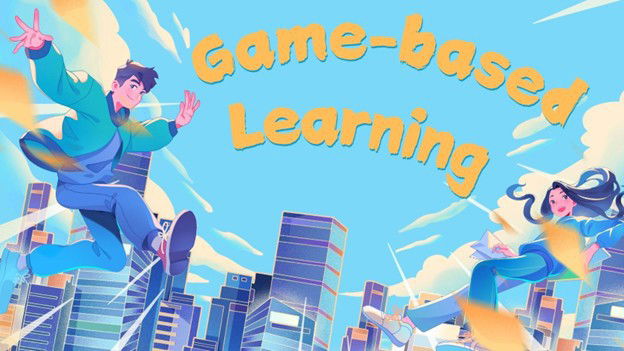Because of innovations in automation and artificial intelligence, brands and agencies are leaving behind the old creative brief and opting for something slimmer, quicker, and much more scalable.
This isn't a hack—it's an upgrade of the entire system. And Pippit's URL to video convertor is picking up speed, consistency, and ROI that the old system just can't keep up with.
Let's break down how the creative factory of 2025 operates on links, and why your next campaign may be one URL away from being ready to go live.
The product page as creative brief: how AI interprets pages in seconds
Today's AI video generation tools such as Pippit are not only churning out animations—they're playing the role of mini-strategists. They survey a product page and convert it into platform-ready content that strikes the right angles.
• Copy that converts, created from specs: Titles, bullet points, and descriptions are scrounged to craft captions and voiceover scripts optimized for social platforms.
• Imagery pulled and augmented: Product images, lifestyle images, even alt text are drawn and reconfigured into storyboard format.
• Calls-to-action framed: Depending on price, category, and sense of urgency, the tool can calculate whether the CTA needs to be "Try it free," "Limited drop," or "Only a few left."
• Social tone auto-adjusted: A skin care product may receive soothing tone with gentle animation, whereas a kitchen appliance receives energetic music and dynamic text cuts.
With a single input, creators receive a rough cut that's surprisingly brand- and brief-on—without ever having written either.
Why creative teams are trading strategy for link-based generation
Traditional production involves coordinating writers, designers, animators, and editors. With a URL to video pipelines, that whole process gets compressed and optimized.
• Quicker from concept to delivery: No more waiting seven days for script approvals or moodboard revisions.
• Consistent creativity at scale: AI templates ensure 20+ product videos have a consistent tone, structure, and layout.
• No brief fatigue: Rather than typing out forms or writing paragraphs explaining the "brand story," teams simply drop in the product page and let the system handle the rest.
• More optimization time, less prep time: Liberated from creative grunt work, teams can spend more time experimenting with alternate hooks, headlines, or formats.

The time savings are real, but so are the creative dividends. Because when Pippit, an AI video generator, manages the cookie-cutter setup, human teams get to spend their time strategizing, not prepping files.
From one product, many ads: how URL input unlocks performance variants
Entering a single URL doesn't equate to receiving only one version of the ad. Rather, it's the opposite: brands can automatically create various ad versions optimized for varying personas and platforms.
• Cuts specific to each platform: YouTube widescreen, TikTok vertical, Instagram square—all automatically generated.
• Multiple emotional angles: From "problem-solution" to "testimonial" to "FOMO," videos are cut to target different conversion triggers.
• Speed for A/B testing: Within 30 minutes, a brand can have five variations of a video live on social.
• Script personalization at scale: The same product can be sold to students, parents, or working professionals with slight changes in tone.
When a single product URL can drive a whole campaign grid, performance marketers get an enormous testing benefit.
How small teams are creating big brand presence—with no editors needed
What once took a full-stack creative department to do can now be accomplished by a growth marketer with a login and a link. Particularly for startups or DTC companies, this has made the playing field even.
• Launch product with only the listing page: No scriptwriters or freelancers need be hired—everything required is already on your site.
• Decrease dependence on outsourcing: Increasingly, brands are taking video in-house using AI software with drag-and-drop editors and pre-formatted templates.
• Speed = relevance: As trends shift every week, creating timely, reactionary content quickly is a competitive advantage.
• Optimize without technical expertise: If one CTA isn't performing, you can re-create that same video with new copy in seconds.
A lean growth team can now act like a full-fledged content studio—and that's accelerating the pace of online commerce.

AI-driven storytelling is more than automation—it's about intelligence
Efficiency is a given, but what truly differentiates today's top tools is understanding context. The AI isn't merely reading words—it's decoding the product narrative.
• Differentiation detection: If a product has "sustainable packaging" or "powered by AI," the video will feature that value prop.
• Tone matching: A high-end serum receives a slow, smooth zoom and refined text. A gadget in its heyday receives jump cuts, memes, and staccato overlays.
• Smart voice sync: Voiceovers and avatars aren't randomly assigned—they're paired with target audiences and product types using usage data.
• Curved text integration: In scroll-stopping highlights, the system can include arched CTAs, round price bursts, or animated curved text surrounding key features.

This combination of technical automation and brand-wise storytelling is what differentiates generic AI output from high-performance creative.
The ROI argument: How URL video drives conversions and minimizes cost
It's not about speed or convenience—it's what this new model brings to the bottom line.
• Lower cost per asset: No hourly fees for writers, editors, or voiceover artists—just flat-rate generation at scale.
• Improved ad relevance: With each element sourced from the live product page, the videos remain up-to-date and aligned with the shopper's journey.
• Increased conversion rates: Visual narrative that resonates with product value props drives more impactful clicks and more knowledgeable shoppers.
• Scalable success: With one SKU or 100 SKUs, brands can scale creative production without campaign bottlenecking.
This is the ad factory model—low input, high output, and strong results.
2025's marketing ace: one link, endless possibilities
In this new world, the product page is no longer a destination—it's a takeoff point. And with Pippit's AI video creator, even the most junior marketer, agency, or founder can transform a URL into stop-scrolling, high-converting content.
Next time someone asks for "creative assets," don't frantically produce decks or drive folders. Just drop the link.
Because in 2025, the brief is the page—and the answers are just seconds away.











— Comentarios 0
, Reacciones 1
Se el primero en comentar